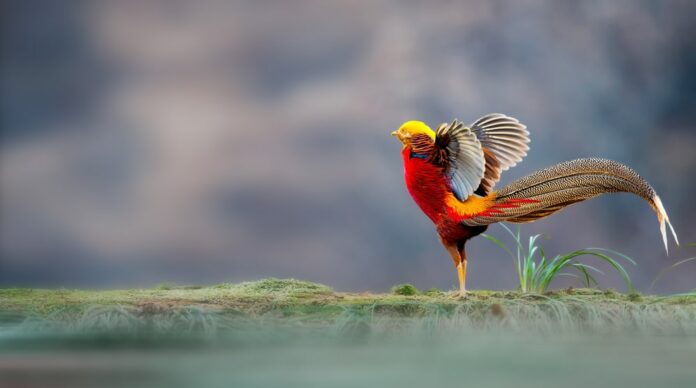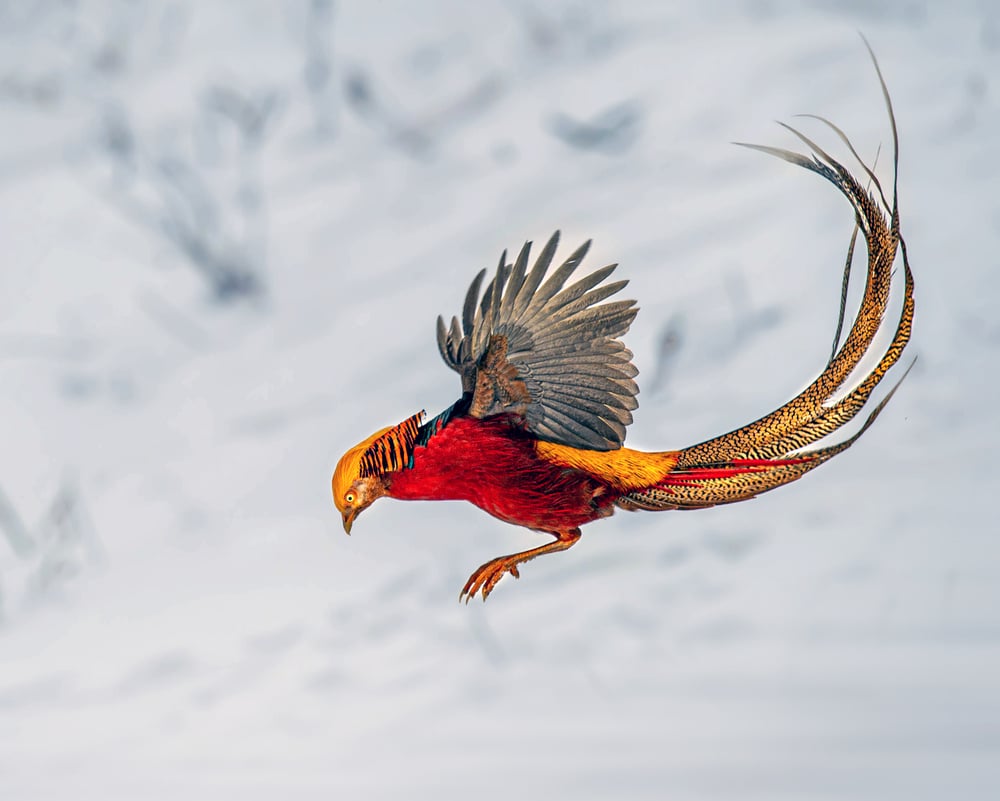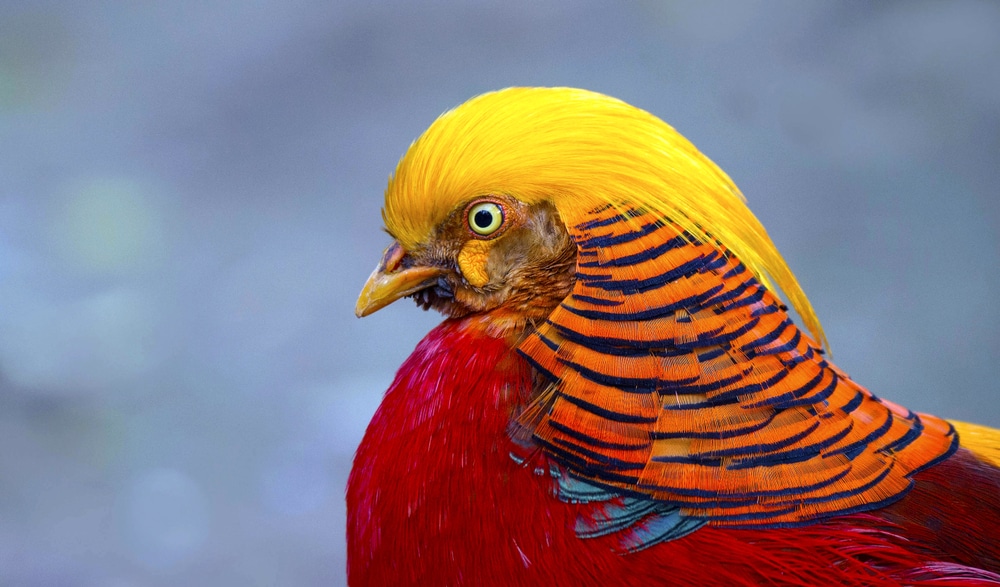
male pheasant (Phasianus colchicus)
Learn more about the golden pheasant
Table of Contents
- 1 Learn more about the golden pheasant
- 1.1 The Golden Pheasant’s ID Card
- 1.2 A distinctive physique
- 1.3 The golden pheasant, a great seducer but a fighter
- 1.4 The natural habitat of the golden pheasant
- 1.5 A well-thought-out habitat for the golden pheasant in captivity
- 1.6 A solid and well-placed enclosure
- 1.7 A well-appointed space
- 1.8 The needs of the golden pheasant on a daily basis

Nature is capable of creating spectacular shapes and colors.
But only the male proudly displays bright shades on a very graphic plumage!
Originally from Central China, it then took up residence in England following various imports, and a few escapes!
Nowadays, it is mainly in zoos and the aviaries of a few private individuals that golden pheasants are admired.
But what is the character of this beautiful bird with the golden helmet? What are their daily needs? Is it easy to raise them at home?
Meet the golden pheasant, this flamboyant bird with a strong character!
The Golden Pheasant’s ID Card

A distinctive physique
Indeed, this tuft of feathers, which falls nicely on the nape of his neck, is not yellow. It is literally golden!
All around, its ruff is more orange, even tending to brown, and streaked with black.
Underneath, on the top of its back, the feathers are quite dark green and slightly metallic. The lower back is yellow. As for its breast, it is scarlet red.
The central feathers of its long tail are black, dotted with brown spots.
The molt takes place at the end of spring, giving way to a new plumage that is just as beautiful.
The golden pheasant, a great seducer but a fighter

The golden pheasant is a rather solitary animal, except during the mating season. As soon as it begins, it can be heard singing ardently to seduce the females. It is also during this period that he does not hesitate to seek a fight with the other males.
Once contact is established with a female, the bridal dance can begin!
The male then stands as close as possible to the female, and proudly spreads all the feathers of his head. It also lowers one of its wings to show the colors of its tail, and its golden rump!
When this seduction maneuver works, then comes the time for mating.
Little is still known about the nesting habits of the golden pheasant. However, one thing is certain: the male doesn’t take care of anything! Only the female is responsible for incubating the eggs, for 22 days, and raising the young to their adult size, at about 4 months.
She is able to lay between 5 and 15 eggs at a time. It is also thanks to its camouflage mode plumage that it can remain hidden from the eyes of predators.
The natural habitat of the golden pheasant
They have taken up residence in pine and larch forests.
Nowadays, many zoos as well as a few passionate individuals continue to take care of this magnificent bird with surprising colors.
A well-thought-out habitat for the golden pheasant in captivity
Quite imposing, the golden pheasant naturally needs a certain amount of space to live comfortably. Its aviary must therefore be spacious and adapted to the number of individuals. Count about 10 m2 per pheasant.
The perfect aviary is longer than it is wide. For example, if you want to raise 1 male and 5 females, the ideal ratio for a happy cohabitation, plan for an aviary that is 2 m high maximum, 3 m wide and at least 6 m long.
A solid and well-placed enclosure
The golden pheasant does not like to be agitated too much, especially when the female is in the egg-laying period. The ideal place in the enclosure is therefore as quiet as possible, far enough away from the various sources of noise.
Be careful not to install pheasants in a ventilated space. Their eyes and nasal cavities are sensitive to drafts.
The wire mesh is made of tight mesh, to prevent predators from entering the enclosure.
Also provide modular spaces in the aviary, in case you need to isolate an individual for example.
A well-appointed space
In the aviary, the golden pheasant needs a closed shelter to protect itself from the weather, but also to have shade in case of bright sun.
The ground is slightly sloping and above all well drained in order to facilitate the drainage of rainwater. It can be covered with bark or a slightly sandy mixture to reduce the risk of mud.
Add to this a patch of grass, a few bushes and other trunks so that your pheasants can hide and/or climb on them, not to mention perches on which they will spend their nights.
The needs of the golden pheasant on a daily basis
Like any animal, the golden pheasant appreciates a regularly cleaned habitat, quality food and clean water.
This galliform is omnivorous. The pellets sold by specialist brands are perfect for him. You can complete with greens, such as dandelion, salad, as well as pieces of vegetables and fruits, such as tomatoes or apples.
Add to that a little meat, fish, or leftover cheese, and you have the perfect menu for golden pheasant.
On the health side, it needs a dewormer twice a year and an antiparasitic treatment, to avoid flea infestations.
The golden pheasant is one of those ornamental birds that we never tire of contemplating. It is not surprising that many individuals fall in love with this galliform with its shimmering colors.





Thank you for your sharing. I am worried that I lack creative ideas. It is your article that makes me full of hope. Thank you. But, I have a question, can you help me? https://www.binance.info/ro/register?ref=V3MG69RO